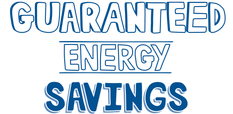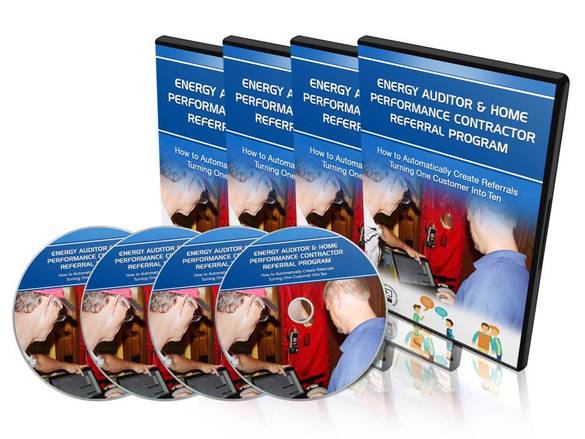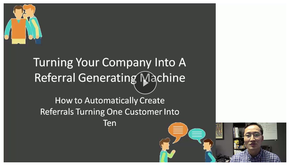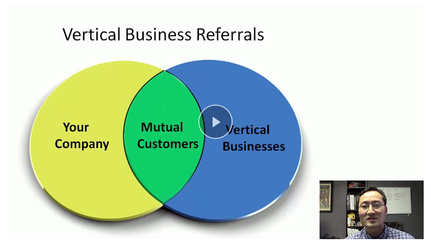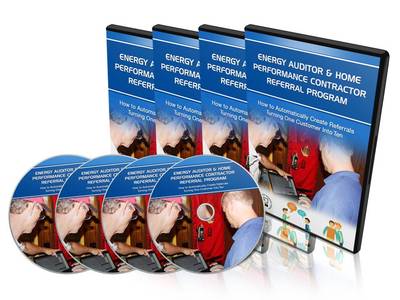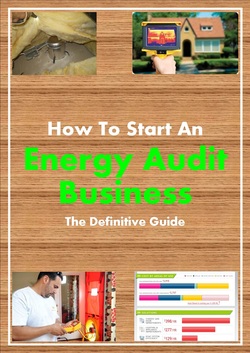How to GET MORE LEADS WITHOUT WASTING
TIME & MONEY ON UNPROVEN ADS
This may well be the most POWERFUL form of marketing on the planet. However, most energy auditors and home performance businesses have almost no plan or system in place to make these happen on a regular basis.
Referrals should be in every energy auditors and home performance contractors marketing arsenal because referrals are the least marketing expense with the largest ROI to gain new business.
Referrals should be for any energy audit and home performance business that:
Compared to the usually high cost of acquiring a new customer, there's a much lower cost of acquisition with a referral, because they find you; you don't have to go prospecting for them. Energy auditors and home performance contractors are well positioned to be the home-heroes to our customers. There's no doubt in my mind about that. I've seen it time and time again, and it's added to my bank account time and time again.
While incredible customer service goes a long way in generating referrals, you don't have to leave them to chance. A formal customer referral program can really be one of your greatest marketing tools. In fact, my home performance business has reliably generated two new referrals every week.
Referrals should be in every energy auditors and home performance contractors marketing arsenal because referrals are the least marketing expense with the largest ROI to gain new business.
Referrals should be for any energy audit and home performance business that:
- Doesn't know what marketing avenues to try
- Doesn't have a big marketing budget to waste on trial and error
- Needs more leads
- Needs higher quality leads
- Needs a reliable source or leads
Compared to the usually high cost of acquiring a new customer, there's a much lower cost of acquisition with a referral, because they find you; you don't have to go prospecting for them. Energy auditors and home performance contractors are well positioned to be the home-heroes to our customers. There's no doubt in my mind about that. I've seen it time and time again, and it's added to my bank account time and time again.
While incredible customer service goes a long way in generating referrals, you don't have to leave them to chance. A formal customer referral program can really be one of your greatest marketing tools. In fact, my home performance business has reliably generated two new referrals every week.
Why Every Energy Auditing Company Should Have a Referral Program:
|
BOOST YOUR REFERRALS WITH THE NEW
HOME PERFORMANCE REFERRAL PROGRAM
NOW FOR JUST $97
|
|
OUR GUARANTEEI know you are asked like we are everyday to give energy savings guarantees from customers, well this is our guarantee for you, the hard-working energy auditor and home performance contractor. Our program has been so successful and repeatable even our admin staff can run campaigns on autopilot and bring in high quality leads. If you go through the program and implement the strategies we give you we guarantee your satisfaction. If you complete the campaigns and have not generated one referral in one year, just send us your work as proof you tried and we will refund your money, simple as that.
|
The Easiest Ways to Turn EVERY Customer Into a
Perpetual Referral Machine
The HPC's Referral Marketing Program is a 4 Module online training course. Each Module will detail actual marketing campaigns, techniques and the strategies that will enable you to Put the Brakes on Expensive, ‘Trendy’ Experiments and Instead Let the Power of TRUST and WORD-OF-MOUTH Provide You With Top Quality Leads…
Day After Day - Reliably, Predictably, Like Clockwork”
This course is for you if...
Here's what this product does for you...
Day After Day - Reliably, Predictably, Like Clockwork”
This course is for you if...
- You are an energy auditor or home performance contractor looking to grow your business and expand by adding a solid referral campaign to your existing marketing campaigns.
- You are frustrated with weak marketing campaigns that are lucky to even break even.
Here's what this product does for you...
|
module 1
|
Introduction & Fixing Broken Windows
|
|
module 2
|
Nuts & Bolts of Increasing Referrals for Energy Auditors
|
|
module 4
|
Vertical Business Referrals
|
CREATE A ROCK SOLID HOME PERFORMANCE REFERRAL PROGRAM
Only $97
|
|
Don't Have Your Blower Door Yet?IF YOU DON'T HAVE YOUR ENERGY AUDIT COMPANY SET UP YET, WE RECOMMEND THAT YOU READ OUR OTHER BOOK FIRST.
|


